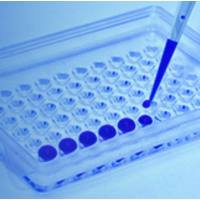Transformation of Brucella Species with Suicide and Broad Host-Range Plasmids
互联网
605
The six species that make up the genus Brucella infect a wide variety of animals and humans (1 ). This bacterial species is gram-negative and classified as a facultative intracellular pathogen (reviewed in ref. 2 ). In the livestock industry of the United States and numerous countries throughout the world, the major economic impact of Brucella is its ability to induce abortions in cattle (3 ). B. abortus is able to infect and replicate within macrophages (4 –6 ), trophoblasts (7 –9 ), and a variety of other cells (10 –12 ). It is not clearly understood how virulent strains of B. abortus survive in the bovine host for extended periods of time in the face of a detectable cell-mediated immunity (3 ). In order to determine the genetic basis of the virulence of Brucella , i.e., to replicate and live inside professional and nonprofessional phagocytic cells, it is necessary to identify virulence genes as well as characterize these genes by complementation and mutational studies. Thus, the ability to transform Brucella with suicide plasmids (to introduce transposons or cause allelic exchanges) or replicating plasmids (to perform complementation studies) is paramount in implementing molecular approaches to unravel the genetic basis for Brucella virulence determinants.








